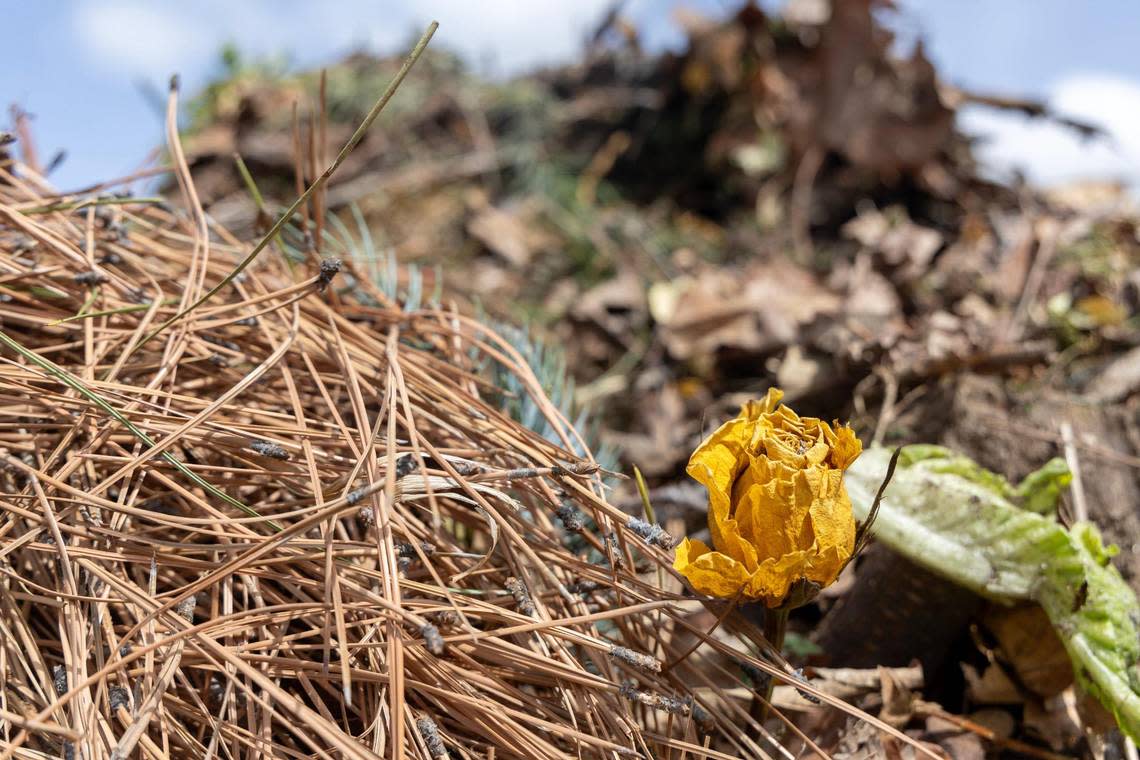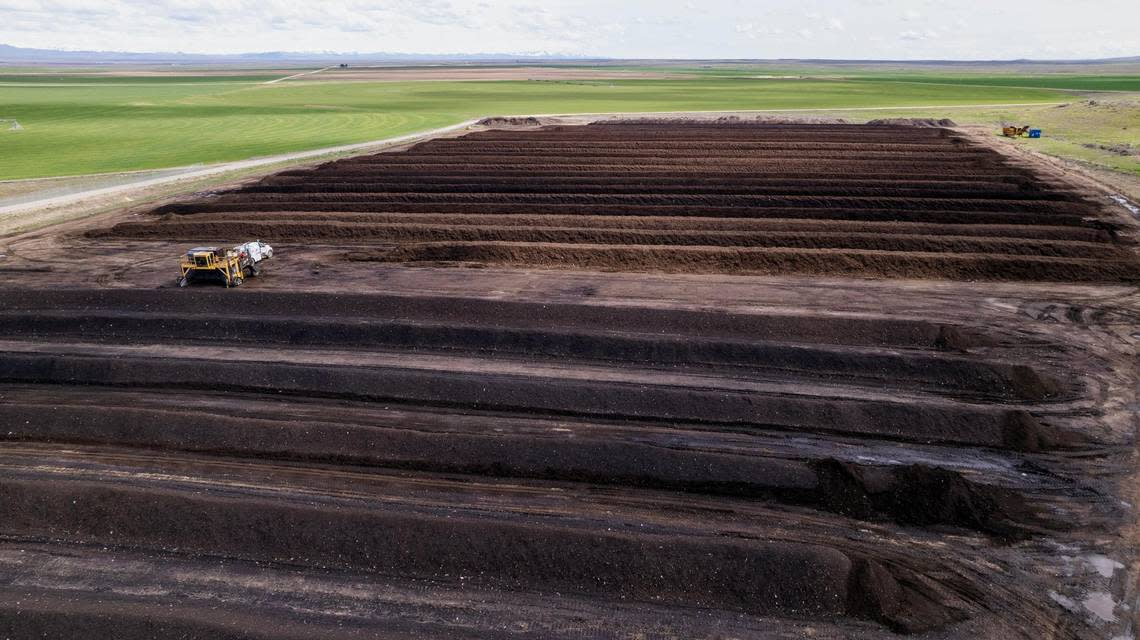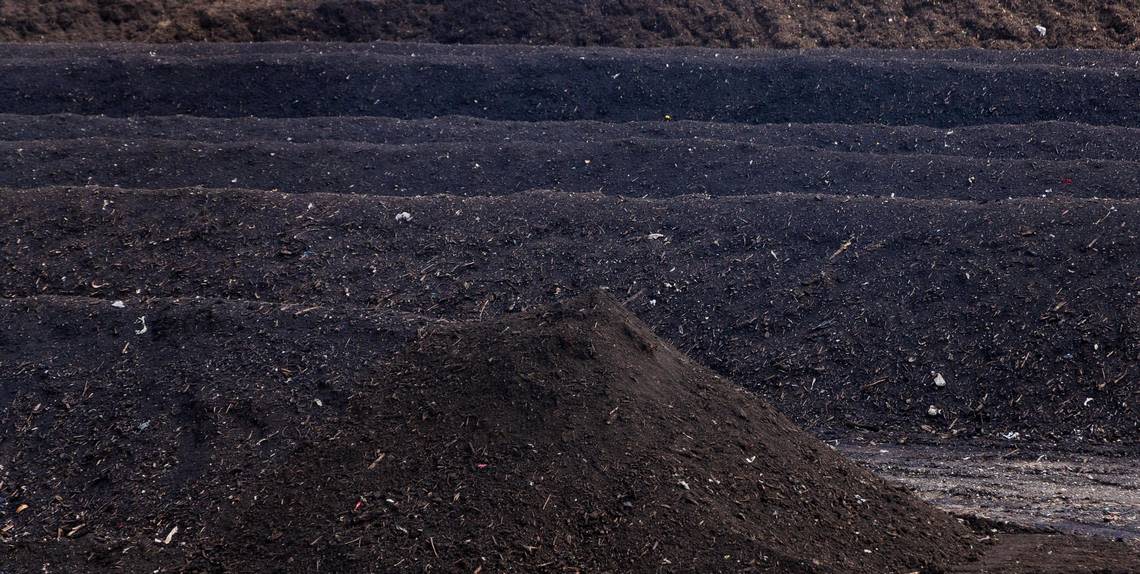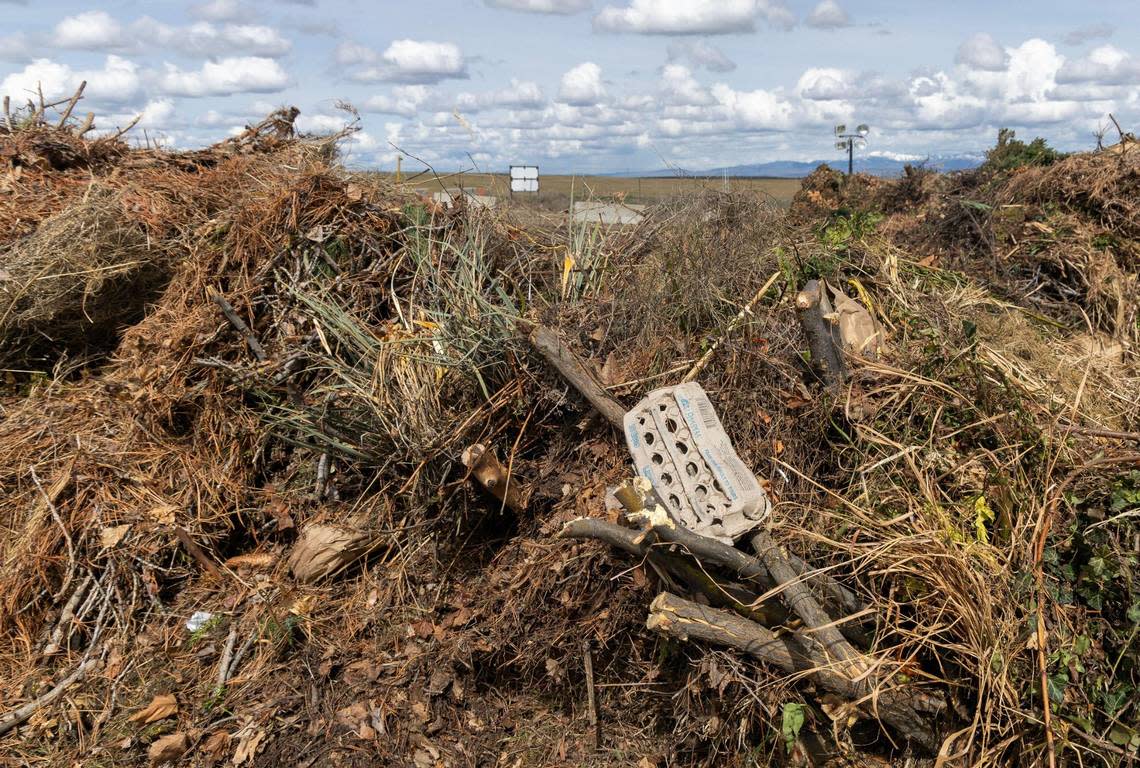From weeding to fertilizing: What to know about Boise compost for spring gardening
Twenty miles south of Boise, crews at the city compost farm are bracing for the busy season.
“Grass season,” as compost program director Lisa Knapp calls it, means bag after bag of lawn clippings and other yard waste. As temperatures warm and plants bloom, Boise-area residents are weeding flowerbeds and cleaning up the remains of last year’s leaves while preparing gardens for a new growing season.
The city compost program can help with both, offering a place to send your discarded waste and a free finished compost that can enrich your soil. The broken-down organic matter in compost adds key nutrients to help plants grow, helps soil retain moisture and encourages beneficial microorganisms, animals and insects, according to the Environmental Protection Agency.
Knapp said the program has been a big success since its implementation in 2017, with 97% of Boise’s single-family homes having compost carts. Still, there’s a lot to keep track of. Here’s a short guide to help you make the most of the compost program this spring.
1. Can I put weeds in the compost?
Yes, weeds can go in your Boise compost bin — even noxious weeds like goatheads and rush skeletonweed.
Nearly all yard waste can be composted, from stumps to pine cones. Avoid adding landscaping rocks or gravel, bricks or pavers. Be sure to pick up any dog poop before raking or mowing, since the city compost facility does not accept animal waste.

2. How do I participate in the program?
The compost program is operated by Republic Services, the same company that handles Boise’s trash and recycling. Fill out the city’s online cart-request form to get a compost-specific cart if you don’t already have one. There’s no additional cost — in fact, residential customers get lower monthly rates for having compost and recycling bins, saving about $13 per month compared with trash bins alone.
Republic Services picks up compost bins from the curbside weekly on the same day as trash collection. Unlike the city trash and recycling programs, the compost program has no public drop-off locations.
3. What happens to my compost?
Compost materials are taken to the city-owned Twenty Mile South Farm in Kuna to be processed.
Trucks dump the organic waste materials, and those truckloads are checked by employees for potential contaminants like garbage.
Next, the material goes through a grinder to pulverize large pieces of debris. It’s then made into 500-foot-long heaps called windrows where they’ll remain for the duration of the decomposition process. Dozens of rows of compost heaps, each about 7 or 8 feet high, stretch across more than 800 feet — nearly the length of 2½ football fields. It takes just a few days for bacteria, insects and microorganisms to begin breaking down items, a process that produces so much heat you can see steam rising from the heaps.

Workers use large thermometers with 3-foot stems to check the internal temperature of the compost piles at multiple points in each windrow. Within just a few days, temperatures inside the stacks reach 100 degrees, and they continue to heat up as materials decompose. Knapp said the windrows hover around 150 degrees, far hotter than the 131-degree benchmark required by the federal definition for compost.
Once a week, workers turn each windrow so all pieces of material spend time in the hot inner core of the pile. When a windrow is sufficiently broken down, it’s sifted for debris, including larger pieces of organic material and contaminants like plastic. By this point, the compost is a rich dark brown color, earthy smelling and loamy.
These fully processed compost piles are then sent to community distribution points and other end users, including Boise Parks and Recreation and wholesale buyers, who create soil blends and commercial compost.
In all, Knapp said, the process takes about six months from when a truckload is delivered to when it’s finished and redistributed.
4. Where can I get finished compost?
Boise has two public pickup locations for finished compost:
The Idaho Botanical Garden, 2355 N. Penitentiary Road.
The Joplin Road Compost Site, 12142 W Joplin Road.
Boise residents are allowed 2 cubic yards of compost per year for free. Compost is available only for Boise residents who participate in the program.
The compost is in piles, so plan to bring your own shovels and any necessary containers.
If multiple people in your neighborhood are interested in using compost, the city will drop off a free truckload of 20 to 25 cubic yards for residents to share through its Community Compost Giveback program. The requesting resident or neighborhood group designates a dropoff site in a common area or at someone’s home.

5. How do I know if this compost is any good?
Knapp said she frequently hears from skeptics who doubt the quality of Boise’s compost.
“It’s like this living urban legend that it’s not good compost,” Knapp said. “I use it in my own yard.”
But you don’t have to take her word for it. Boise’s compost is certified through the U.S. Composting Council’s Seal of Testing Assurance program, which certification requires participants to submit their compost for regular quality and content testing. Those test results are posted online at the city website so users can see what they’re adding to their soil. The data sheets show the nutrient content, pH balance, and pathogen and metals testing results.
Test results for February showed Boise’s compost had a nutrient content of 4.9. The measurement, which is the total amount of nitrogen, phosphorus and potassium found in the compost, is at the high end of average for compost.
Knapp said the results fluctuate slightly depending on when the compost batch was collected. A spring batch, for example, may be more nitrogen-rich than a fall batch, because spring compost contains more grass clippings and other green materials rather than dry leaves.
“The recipe changes throughout the year,” Knapp said.
Compost users will also notice a difference based on when they pick up a batch. In the summer, compost that has been baking in the heat will be more dry and silty.
Though the compost is screened several times at the farm, Boiseans may still find bits of plastic in it — either from contaminants erroneously added to compost bins or from items that blow into the compost as it processes or while it sits at pickup sites.
Knapp told the Idaho Statesman that the question she hears most frequently is from concerned gardeners who worry the compost will transplant weed seeds into their gardens. She said the high processing temperature of the compost has been shown to kill even the hardiest weeds.
A boon in weeds after using compost is likely a result of adding nutrients and moisture to an existing seed bank, Knapp said.
6. How should I use compost at home?
The Boise program has several higher-level Composting Council certifications that verify it’s safe to use on trees, shrubs, flowerbeds, lawns and vegetable gardens.
Compost is a soil amendment, not a soil replacement, so plants should not be grown in compost alone. Instead, add it to existing planters or beds or around trees, incorporating the compost into the soil to improve its structure and add nutrients.
A fine layer of compost — up to half an inch thick — can also be scattered over top of existing lawns to add nutrients, a process called “top dressing.” Knapp said Boise Parks and Recreation used city compost to top dress multiple parks last year.
Use a wheelbarrow or bins to place piles of compost around the lawn, then rake the material over the lawn to distribute it. You can also buy a compost spreader, which tumbles compost in a basket at the end of a long handle as you push it over the lawn. Compost particles are typically too large to use in most fertilizer and seed spreaders.
Depending on your lawn’s needs, compost may not completely replace fertilizer, according to gardening experts.
7. Why compost my waste instead of throwing it away?
Adding another waste category can seem daunting, but experts say composting has a big impact on the environment. The composting process reduces greenhouse gases produced by decaying material. Turning compost introduces oxygen to the mixture, allowing for aerobic breakdown that results mostly in carbon dioxide production. In landfills, where those same materials would be buried, they are broken down by anaerobic microorganisms, creating methane.
While carbon dioxide is the most prevalent greenhouse gas in the atmosphere, methane is far more potent — nearly 30 times as effective as carbon dioxide at trapping heat, according to the EPA. Research from climate initiative Project Drawdown found composting can reduce organic waste emissions by 50%.
Knapp said the compost program last year accounted for nearly one-third of all waste collected by Republic Services in Boise — about 33,000 tons of material.
In an email to the Statesman, Public Works spokesperson Melissa Stoner said the city used the EPA’s Waste Reduction Model, which takes into account factors like transportation of waste, to determine the reduction in greenhouse gas emissions from composting. In 2022, the program’s reduction in emissions equaled about 5,000 metric tons of carbon. Stoner said that is equivalent to removing about 1,100 cars from the roads for a year.
Over the program’s seven-year lifespan, the carbon reduction totaled about 35,000 metric tons.

Ada County is growing fast, but its landfill is filling up faster. And that’s a problem
A ‘chilling effect’ on Boise protests? Sierra Club files federal suit over city law
What should I set my thermostat at as Boise warms up? This temperature will save you money
With help from outside influence groups, Idaho lawmakers work to ban climate action
